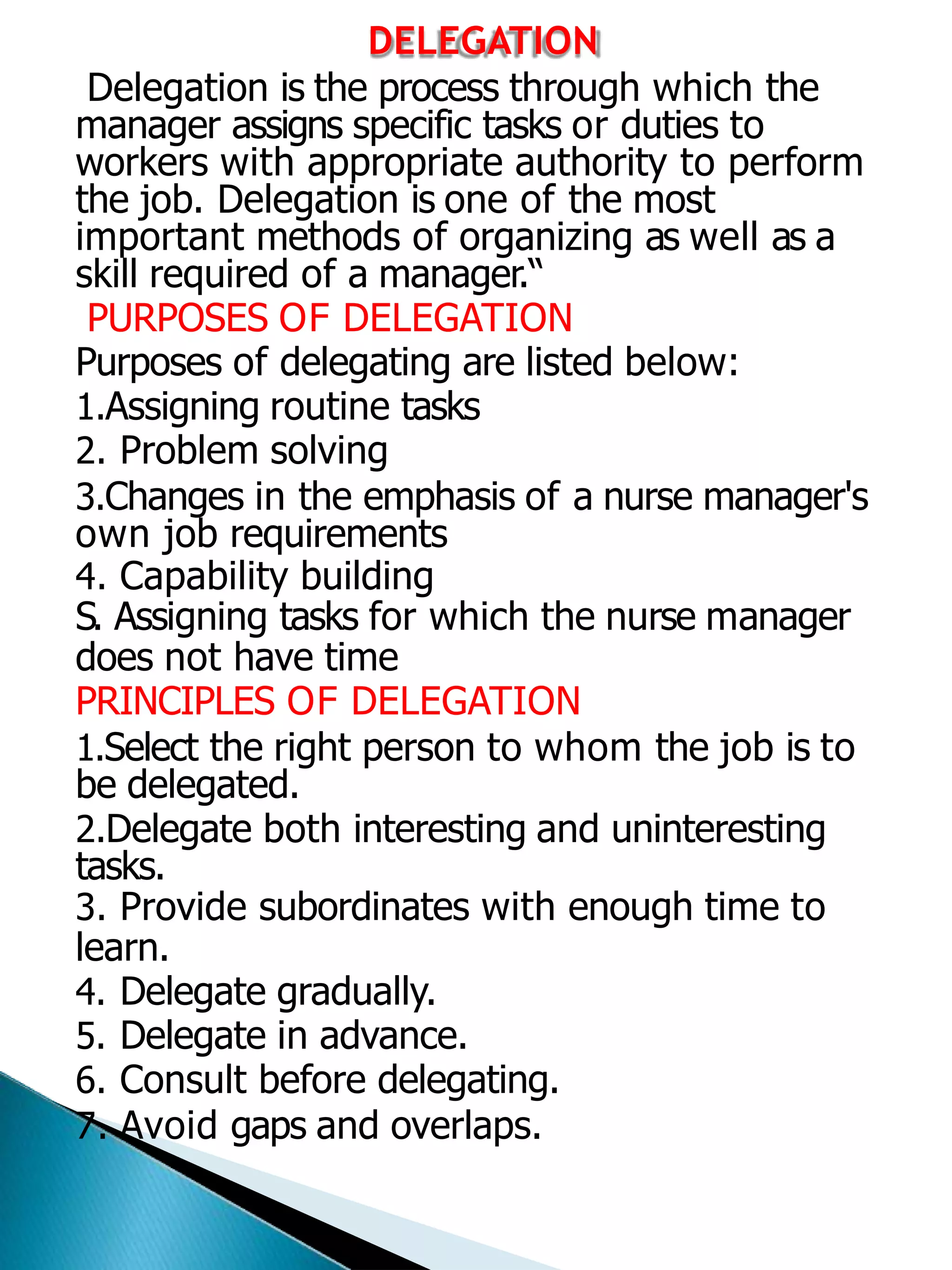The document discusses the management of nursing services in hospitals and communities, focusing on patient assignment, rotation, and delegation. It outlines principles and types of patient assignment methods, emphasizing the importance of individualized care while balancing workloads among nurses. Additionally, it highlights delegation's significance in nursing management and the benefits of job rotation for enhancing skills and responsibilities among nursing staff.












